MacOS is a robust operating system, and its MacBooks are equally stunning. There may be instances where you don’t want to use the default OS and you’d like to explore an alternative operating system that better suits your needs.
Choosing a Linux distribution for a MacBook depends on your specific requirements. Whether you’re a developer looking for a flawless coding experience or a regular user seeking a user-friendly interface.
Here are some of the best Linux Distros for MacBook that you can use to enhance performance, versatility, and user experience on your Mac.
1. Ubuntu
Ubuntu is an open-source widely used Linux distribution that runs on various platforms, including PCs, servers, cloud environments, and IoT devices.
Ubuntu uses the GNOME desktop edition, which is fast, cost-free, and loaded with fresh features for administrators, developers, and creators.
In addition, there are different flavors of Ubuntu, such as Kubuntu, Xubuntu, and Lubuntu, that come with alternative desktop environments, including KDE, Xfce, and LXQt.
Ubuntu follows a regular release schedule, with Long-Term Support (LTS) releases published every two years and receiving continuous support for up to five years.
Ubuntu is based on Debian and places a strong emphasis on security. To improve system security, tools like AppArmor and the Uncomplicated Firewall (UFW) are incorporated, along with regular security upgrades.
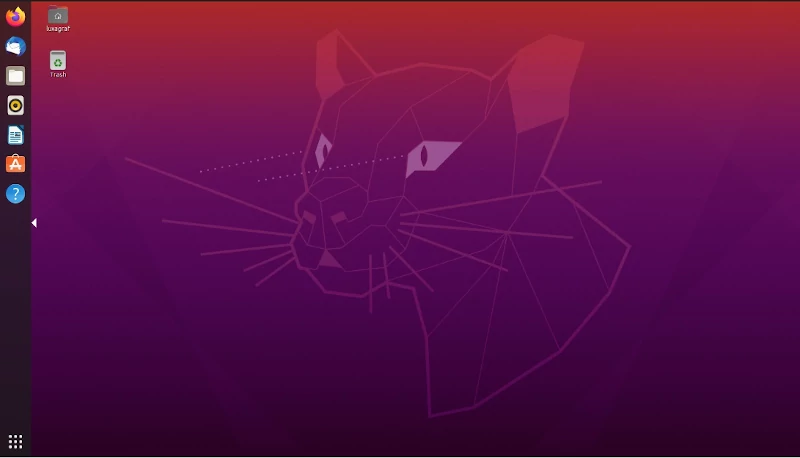
2. Linux Mint
Linux Mint is a Linux distribution based on Debian (originally based on Ubuntu) and is designed to provide an intuitive and hassle-free computing experience for users transitioning from other operating systems.
Linux Mint comes with different desktop environments, primarily Cinnamon and MATE. Cinnamon is a modern and elegant desktop environment, while MATE is a more lightweight and traditional option.
One of Linux Mint’s unique features is its Driver Manager, which makes it easier to install hardware drivers and proprietary graphics drivers, enhancing system performance and compatibility.
Linux Mint version 21.3 is the latest release, codenamed Virginia. This latest version is a long-term support release that ships with updated software, refinements, and new features.
For novices and experts alike seeking a dependable and intuitive Linux distribution, Linux Mint is a good option.
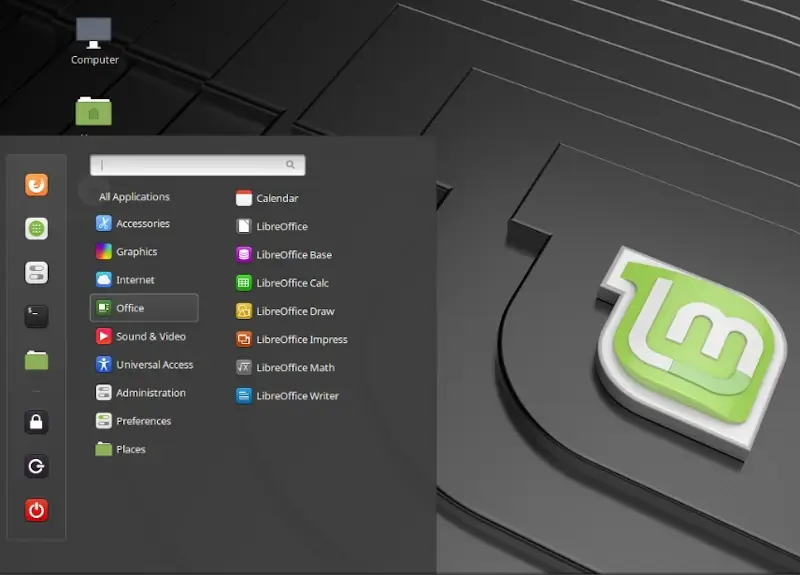
3. Deepin
Deepin provides users with an elegant, user-friendly, and reliable operating system. Deepin ships with several applications built via the Deepin Tool Kit (DTK), which is based on C++ and Qt.
Among these applications are Deepin Package Manager, Deepin System Monitor, Deepin File Manager, Deepin Boot Maker, and many more.
In addition, Deepin comes with its desktop environment, Deepin Desktop Environment (DDE). DDE is renowned for its sleek and contemporary appearance, with a taskbar at the bottom, a dock for quick access to applications, and a control center for system settings.
Debian, a reputable and reliable Linux distribution, serves as the base for Deepin. This base guarantees compatibility with an extensive selection of software packages included in the Debian repositories.
The latest release is Deepin V23 Beta3, which upgrades more than 1400 pre-installed packages in the image, adds more than 250 system update packages and further improves the functional experience.
However, this version is not the final stable version, and the bugs will continue to be fixed in subsequent versions.
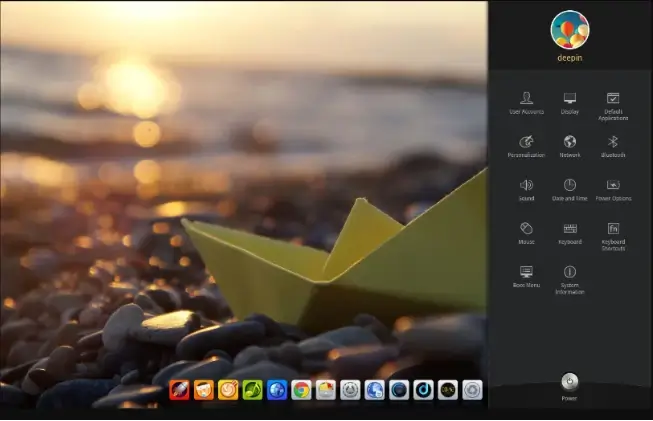
4. Manjaro
Manjaro is a versatile, free, and open-source Linux distribution based on Arch Linux. Manjaro can be installed on a wide range of devices, supporting both x86-64 and ARM architectures, and includes popular desktop environments such as Plasma, Gnome, and XFCE. For even more customization, you can explore community editions such as Cinnamon and Mate.
In addition, Manjaro offers several branches, such as stable, unstable, and testing, allowing you to tailor your software experience. The latest release is Manjaro 23.1, codenamed Jammy, which comes in three flavors, including GNOME and KDE Plasma editions.
This latest release addresses critical security vulnerabilities in the xorg-stack and refines overall package repositories.
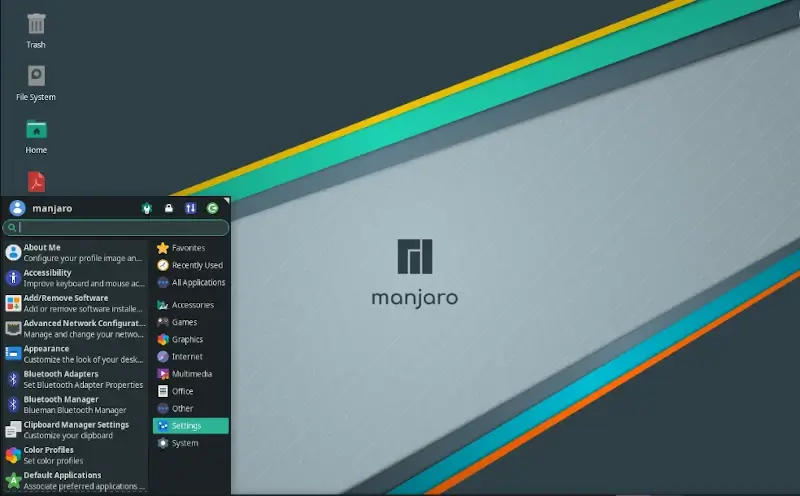
5. Parrot OS
Parrot OS is a free, open-source based on Debian and is designed for penetration testing, ethical hacking, and digital forensics, its development is focused on providing a secure and privacy-respecting operating system for cybersecurity experts and enthusiasts.
Parrot OS ships with numerous pre-installed tools and software for tasks such as network analysis, vulnerability assessment, and digital forensics.
Besides that, Parrot OS supports various desktop environments, including MATE, KDE, and Xfce.
In addition, Parrot OS is designed to be lightweight and efficient, ensuring that it can run smoothly on various hardware configurations. Parrot 6.0 is the latest major release, which comes with an updated Linux kernel (version 6.1 ) and a refreshed base system.
The new release includes security patches, bug fixes, and an updated toolset.
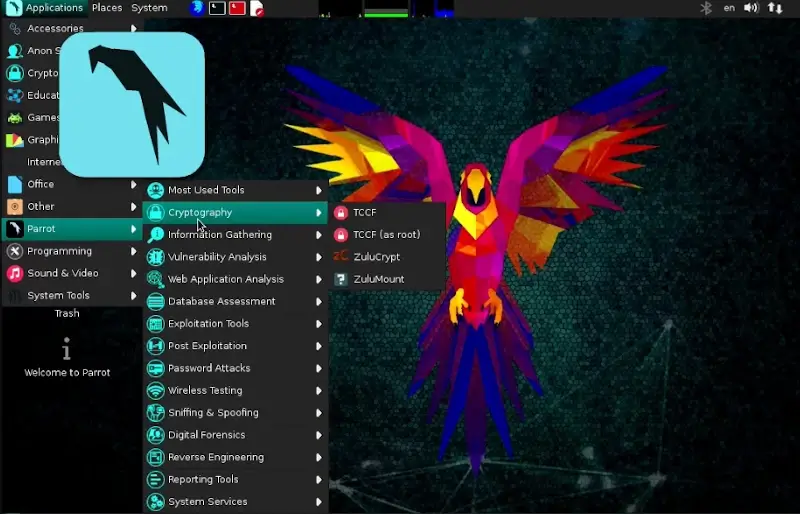
6. OpenSUSE
OpenSUSE is a robust free, open-source Linux distribution developed by the openSUSE project. OpenSUSE provides a comprehensive set of tools for system administrators, developers, and desktop users.
Tumbleweed and Leap are the two primary distributions offered by OpenSUSE. Tumbleweed is a rolling release distribution, providing the latest stable software updates continuously.
Leap, on the other hand, follows a more traditional release model with regular stable releases based on the SUSE Linux Enterprise codebase.
OpenSUSE supports various desktop environments, including KDE Plasma, GNOME, and others. Besides that, it has a built-in tool known as YaST, which provides a centralized location for managing software installations and updates.
The YaST software management tool makes it simple for users to update the system, configure repositories, and add or remove software packages.
At the moment, the latest release is OpenSUSE Leap 15.5, which ensures stability, security, and compatibility with modern hardware.
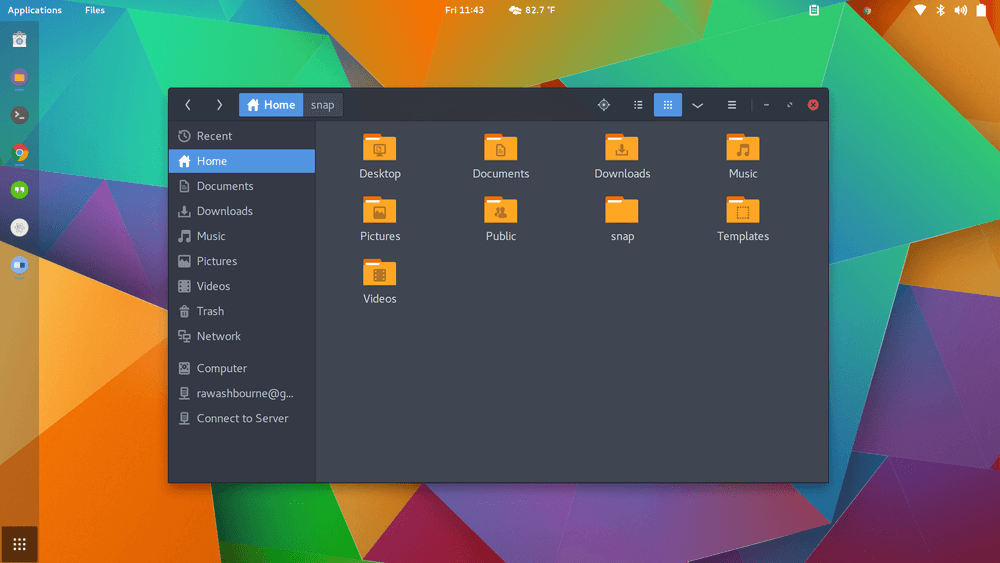
7. Devuan
Devuan is a fork of Debian that intentionally avoids using systemd as its init system. By doing so, it allows users to reclaim control over their system and maintain Init Freedom.
Devuan offers a secure upgrade path from Debian, ensuring compatibility with other init systems and avoiding unnecessary entanglements.
Devuan strives to maintain compatibility with Debian, which means it uses the same package management tools and repositories The project’s goal is to provide a systemd-free environment for users who prefer traditional init systems or have specific technical or philosophical reasons for avoiding systemd.
Devuan supports a variety of desktop environments, including Xfce, LXQt, LXDE, MATE, and more. Devuan can also be used for both server and desktop purposes.
Daedalus 5.0 is the latest stable release of Devuan, and Chimaera 4.0 has moved to its old unstable status. Devuan is all about empowering you to customize your system the way you want it.
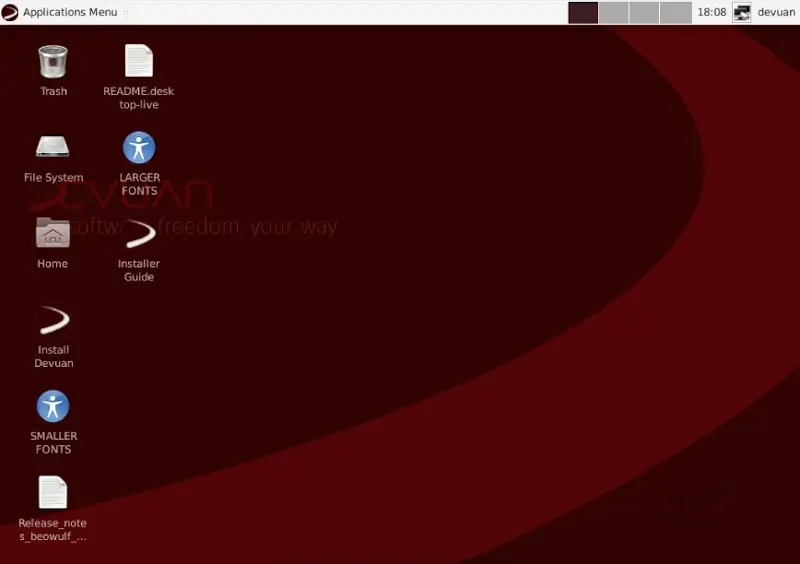
8. Ubuntu Studio
Ubuntu Studio is basically Ubuntu tweaked chiefly for media production. It is excellent for working with graphic design and modeling applications like Blender and GIMP, video production, 3D modeling, animations, photography, book publication, audio production, recording, mixing, mastering, etc.
If would be working with any of the open-source applications for media production then put a hat on things by running them on Ubuntu Studio.
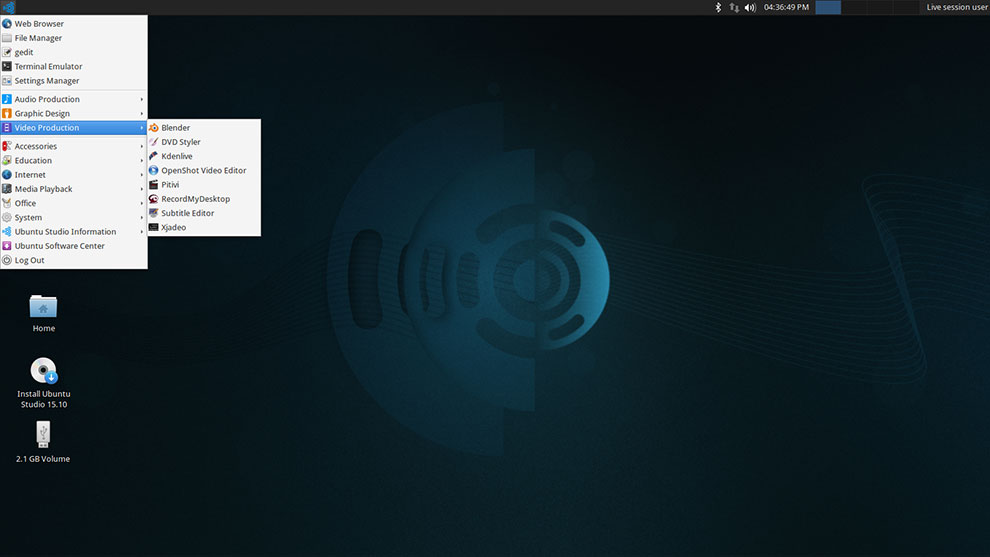
9. Elementary OS
Elementary OS is a Linux distribution renowned for its emphasis on simplicity, user-friendly design, and aesthetic appeal.
Notably, Elementary OS places a strong emphasis on user privacy, guaranteeing that the user’s data always belongs to them and that it does not make advertising deals or collect sensitive personal data.
Pantheon is the default desktop environment, which provides an easy-to-u interface. The desktop environment is often compared to the macOS interface and is designed to be visually appealing.
Elementary OS is built on Ubuntu LTS (Long Term Support) base, providing stability and support for a longer period.
In addition, Elementary OS follows a pay-what-you-want model for users who choose to download the distribution. Users are welcome to contribute financially to support the project’s continued development, but it is not mandatory.
As of this writing, OS 7.1 is the latest release, and it aims to give users the following:
- Providing customization options and features that make the operating system more inclusive and accessible
- Protecting user’s privacy and ensuring apps always operate with their explicit consent
- Addressing user feedback with over 200 bug fixes.
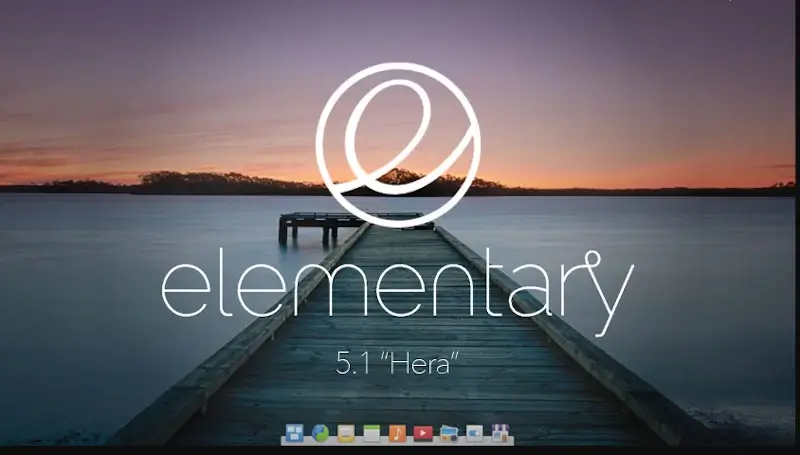
10. Tails
Tails, like OpenSUSE, is a security-conscious distro, but it goes an extra mile. Tails routes all of its internet traffic through the TOR network to ensure complete user anonymity and prevent data interception or analysis by any 3rd parties.
Tails OS does not come straight out of the box as fancy-looking as some of the other options on this list but it boasts the GNOME DE and is based on Debian so you are free to customize away.
If you are super security conscious and will like to have the details of all your transactions accessible to only you, then Tails is the OS you want.
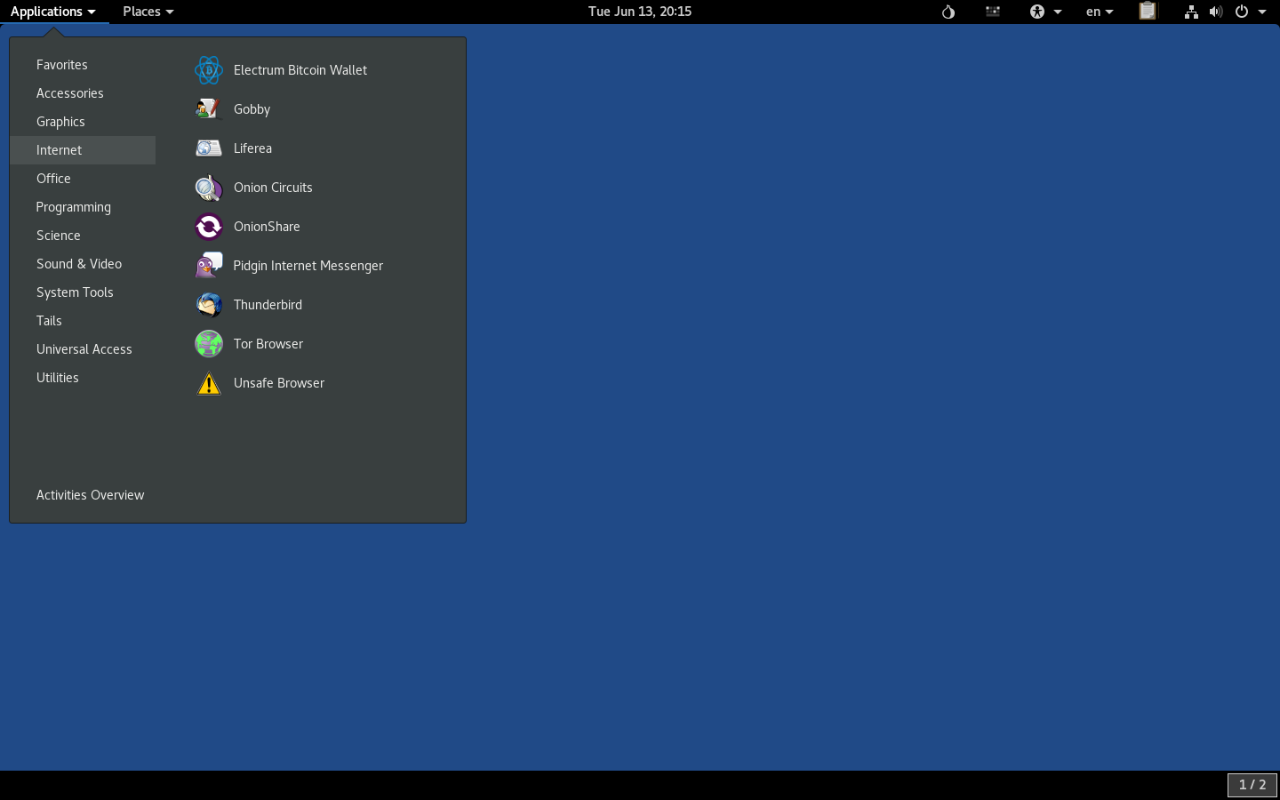
11. Zorin OS
Zorin OS is a Linux distribution based on Ubuntu, designed to be user-friendly and aims to provide a familiar interface for users transitioning from other operating systems, particularly Windows and MacOS.
Zorin OS offers elegant desktop environments, including a customized version of GNOME that mimics the look and feel of Windows.
You can change the desktop layout with the Zorin Appearance software to fit your desired environment. In addition, Zorin OS is optimized to work on older computers, extending their lifespan and reducing e-waste.
The latest release is Zorin OS 17, codenamed Jammy, which is a significant advancement that improves the operating system on all fronts, from appearance to functionality.
It’s brimming with innovative features and upgrades that enable you to maximize the performance of your computer and achieve more than before.
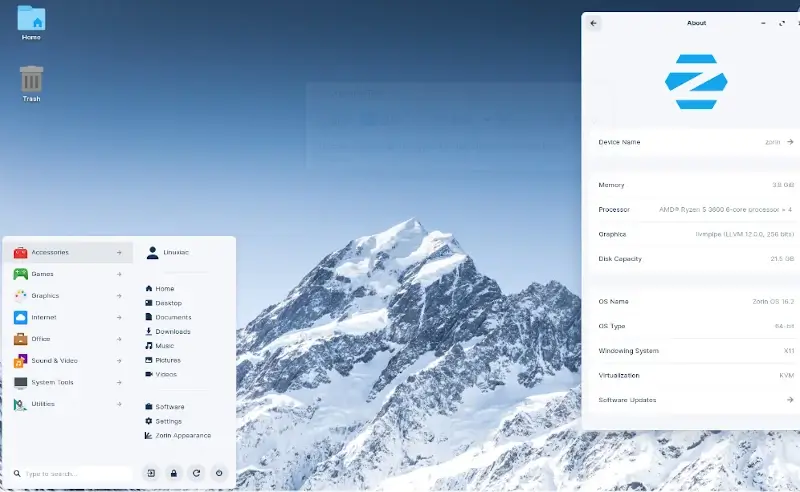
12. Solus
Solus is an independent Linux distribution that focuses on simplicity, elegance, and a user-centric approach. It comes with a selection of default applications, such as Files, Firefox, MPV, and Thunderbird.
Solus supports various desktop environments, such as Budgie, which is a feature-rich desktop environment that combines elements of traditional desktop environments with modern design, and XFCE-Beta which is a lightweight desktop environment designed to be fast while remaining user-friendly.
Besides the Budgie and XFCE-Beta desktop environments, Solus OS also supports other desktop environments, such as GNOME, KDE Plasma, and MATE.
Solus OS follows a rolling release model, allowing users to receive updates and new features. In addition, Solus uses its package manager called “eopkg” for package management.
The most recent release, Solus 4.5, includes upgraded software stacks, applications, and kernels, along with a new installer and an ISO version that features the XFCE desktop environment.
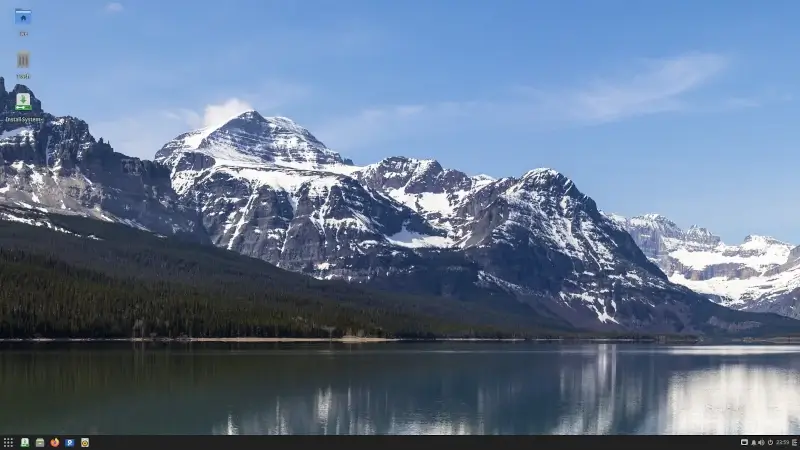
13. Ubuntu Budgie
Ubuntu Budgie is an official Ubuntu flavor that features the Budgie Desktop Environment. It is based on Ubuntu and combines the stability and package availability of Ubuntu with the modern and elegant Budgie desktop.
As part of the Ubuntu ecosystem, Ubuntu Budgie benefits from the Ubuntu repositories, package management system (APT), and underlying infrastructure. Users have access to an extensive range of software packages available in the Ubuntu repositories.
Ubuntu Budgie serves as a portal for everything you need, from drivers to themes and applets. If you’re coming from macOS, Ubuntu Budgie includes an applet that brings back the Hot Corners functionality.
In addition, Ubuntu Budgie is lightweight, lacks bloat, and has modest hardware requirements. The latest release is Ubuntu Budgie 23.10, codenamed Mantic Minotaur.
This new release packs the following functionalities out of the box:
- Linux Kernel: Version 6.5.
- GNOME Stack: Based on GNOME 45.
- Updated Budgie Desktop
- Magpie Window Manager: Budgie introduces its new window manager.
- budgie-extras: Version 1.7, providing additional customization options.
- A brand-new ISO installer called budgie-desktop-installer.
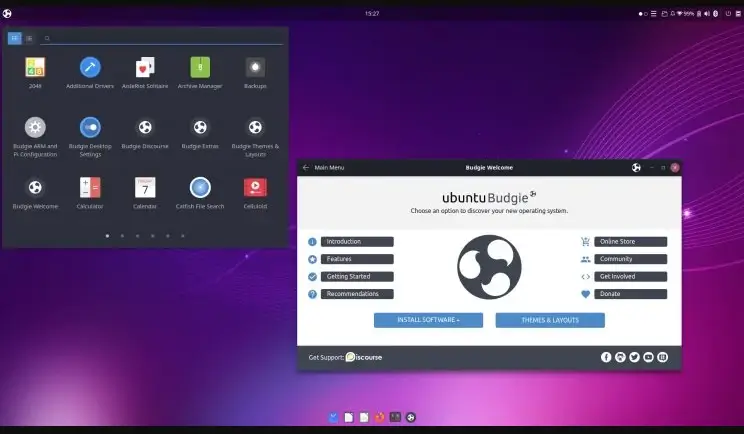
14. Fedora
Fedora is a Linux distribution sponsored by Red Hat and developed by the Fedora project. Fedora aims to be at the forefront of open-source technologies, providing a platform for hardware, clouds, and containers.
Fedora serves as a testing ground for new technologies and software that may later be incorporated into Red Hat Enterprise Linux (RHEL), a more enterprise-focused Linux distribution.
Fedora follows a regular release schedule, with a new version approximately released every six months. It offers different spins and editions, including Fedora Workstation, Fedora Server, and Fedora IoT, among others tailored for specific use cases.
GNOME is the default desktop environment, which provides users with a clean and intuitive desktop experience.
Fedora Linux 39 is the latest release, which comes with a comprehensive set of tools, bug fixes, and updated software packages.
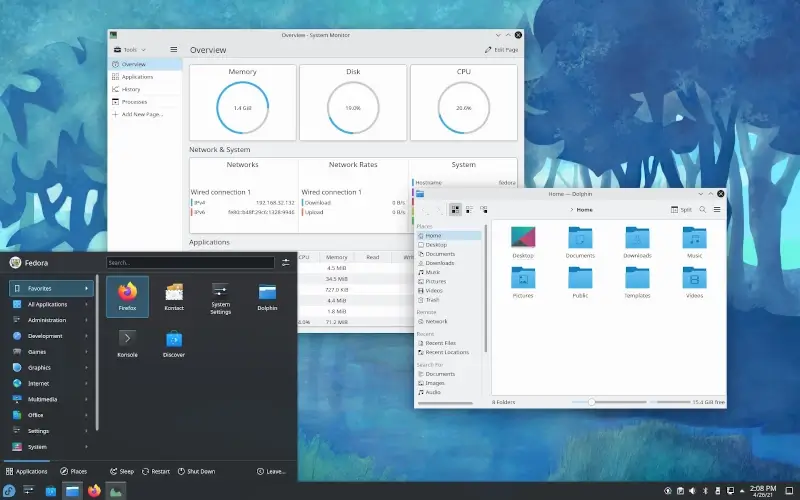
15. Arch Linux
Arch Linux is a lightweight and flexible Linux distribution that focuses on simplicity, customization, and minimalism. Arch Linux is independently developed and follows a rolling-release model, providing the latest stable versions of most software.
The default installation includes a minimal base system, allowing users to customize and add only what is specifically required.
Software packages are managed using the Pac-Man package manager in Arch Linux. Pac-Man simplifies the process of installing, updating, and removing packages from the system.
In addition, users can access and install software from the Arch User Repository (AUR), a community-driven repository that extends the official Arch repositories.
Arch Linux has extensive documentation and a vibrant community. The Arch Wiki is a valuable resource for troubleshooting, configuring, and optimizing the system. The Arch community is renowned for its support and assistance.
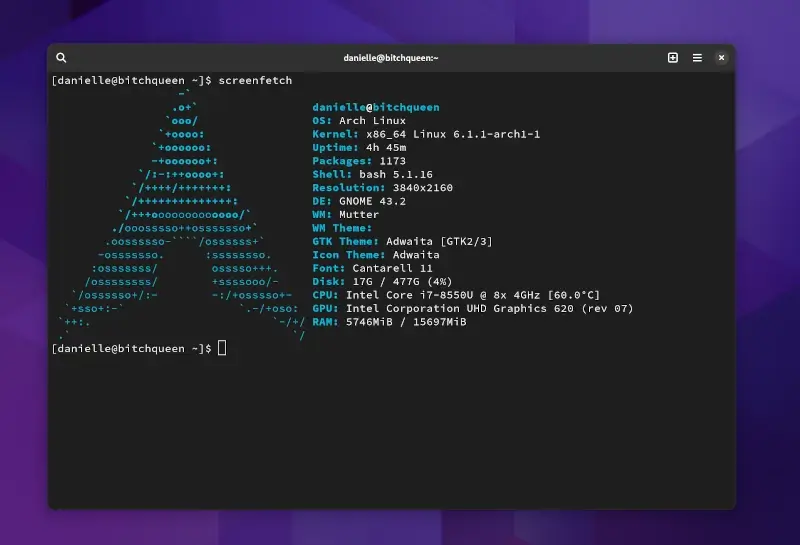
Conclusion
It is important to carefully examine your needs, preferences, and ideal user experience when searching for the best Linux distro for your MacBook. In addition, using a Linux distribution that is updated frequently is always a better option.
For this reason, if you want to feel the same as a Mac, we recommend you try one of the above Linux distros. Which Linux distribution is best for MacBook? Your suggestions are welcome.

I have tried Ubuntu, Mint, Manjaro, and Opensuse on a 2012 MacBook Pro i7 8GB, and not one of them will install. I have followed the instructions listed on each site to no avail. Created a USB stick, created a blank partition on the disk…. nada. Every one of the installs starts and then hangs. No wonder Linus is slow to expand in the marketplace.
I think you are doing it totally wrong. I have changed the distro so many times on my laptops, main still is on Arch Linux forever.
Download –> Balena-Etcher –> put in a usb drive and mark the
.ISOfile you want, and flash that stick-> put it so in the pc and boot from it? it has NEVER failed me once over the years.And yeah Linux is slowly getting there, but the main reason it is not shooting along is not because of them, its because it won’t support linux, luckily now steam support pretty well, for gamers, gimp for images, lutris for .exe files, etc and so on.
I’ve not been able to get Deepin to install on a Macbook Pro. The trackpad on Manjaro is jumpy. Also, Manjaro hangs up too much for my taste. Zorin behaves the best of any distro I’ve tried. BTW, Elementary looks like the Mac OS from 15 years ago. In other words, it’s not very Mac like, unless you like the dated look. Tried it and found it to be very limited in what it offered. Like so many Linux distros, the mouse/trackpad was jerky and imprecise. I really like MX linux. It runs great in a virtual box, but couldn’t get it to install on a Mac or run from a USB drive. The trackpad simply didn’t work at all on a Mac.
Right; Deepin has kinda been an ironic case recently. I have noticed that the latest updates break the OS when it’s run from a virtual environment. Hopefully, this will get fixed soon because it sure is driving interested users away.
May I point out to Linux tragics that spinning off a lot of names is not explaining anything.
It seems a mystery, listening to Linux users, as to what they do besides run and install Linux.
Ask a Mac or Windows User what it is they do and it won’t be that they run Mac or Windows. They have jobs, and the computers help them do it.
My darling openSUSE Leap shines on my Air. Perfect match.
Yeah. Linux distros run excellently on Macs and top tier-Windows PCs.
It’s GNOME on the OpenSUSE screenshot isn’t it? What’s that theme? Damn it looks rad
As someone who’s “disto-hopped” since 2002?…I’d just like to make some observations:
Ubuntu – The “Average Person’s Linux Disto” – Definitely the version of Linux most user’s have tried, started with, or have used once in their lifetime. It’s been around for a long time and appeals to many because of its ease of use.
Linux Mint – The version of Linux most Windows users will gravitate to (at first?) because of its similarities to the Windows desktop environment. Some have moved from Windows to this version of Linux and won’t go any further, because this does everything they want their computer system to do without the hassles of EULA’s or License keys.
Deepin Linux – The most “MacOS-like” version of Linux in existence today. Even more then ElementaryOS. has its pros and cons (Apple-esque interface, shaded / frosted glass accents throughout the desktop. Visually designed to look like the MacOS desktop. (Some say the biggest “issue” with this distro is that it originates from China which some people do not trust for all the news stories of them spying on users through their technology.)
Manjaro Linux – Arch Linux made easy. All that’s required if you’re coming fresh from the Windows or Apple universe is the little effort it takes to learn the commands for updating and such from the Command Line. other than that? a robust and strong distro for everyday use.
Parrot OS – A dressed up version of KaliOS. Has all the bells and whistles that one could want for pen-testing, network monitoring, and other security-oriented applications. Definitely not for beginners! But if one has a penchant for performing security-focused work at home? then this is the distro to do it with!
OpenSuSE Linux – The “second” definitive “enterprise Linux” distro (Red Hat / CEntOS would be the first!) This is what is considered the Linux desktop perfected. It comes with everything you need, and tons more should you need it. YasT is easy to understand and use, and the security on this distro is RIDICULOUS! You would be surprised to know that, along with distros like Tails…KaliOS…and Parrot OS…THIS is the distro a lot oa hackers use when they’re “working”. Even if someone doesn’t plan on using this on a daily driver? I would highly recommend they install it either on bare metal or in a virtual machine to get a feel for it.
Devuan Linux – This is Debian Linux unfiltered, and “pure” this is the old school version of Debian Linux “the way it should have been” For those who love Debian and the entire .deb universe this distro is king. Along with the added benefit of not having systemd on their system trying to control everything? this distro is a favorite of the purists out there.
Ubuntu Studio – This is like having the MacOS Creator’s Suite without having to pay $4,000 for the Mac!!! Everything under the sun is in here, from DAW’s to graphic manipulation tool to paint, photo editing, audio recording, even a full blown studio suite complete with drums, guitars, amps and effects and keyboards. Definitely for those who are artistic or musically inclined.
ElementarOS – While this comes across as a MacOS clone? I feel Deepin did it better. That’s not to say that this distro isn’t good. I’ve had it installed on a premium ultrabook and with its 4K display?…you really can’t tell its NOT a Mac unless you get up-close-and-personal! Along with its easy to use Software Center, and the cool looking theme of its icons and window decorations this is easily one of the better versions of Linux.
Tails OS – The “junior” version of what some of the US government runs on their computers. This distro is secure to a tee, and there’s not much anyone can do to hack you once you install it and configure the security settings to your liking. While this appeals to a lot of folks, not many people know its ins and outs, and therefore its mostly used by those who have some skill in a network security kind of setting.
Honorable Mention:
Fedora Linux – This is the Linux I’ve used since 2002 / 2003 and its never given me any problems! its secure, and is basically the “petri dish” for the apps that make it into the Red hat Enterprise Linux distro. Everything installed on here, while they might be experimental? seems to hold together no matter what. And while its stable and can do any and everything you want? its also not for those who are intimidated by the command line. If you know how to work scripts and CLI syntax really well? this could be the distro for you.
Point Linux – This is Debian “dressed” up and it runs really well. Its not as harsh as Debian and installs just about anything with ease. It comes with enough apps and tools for the average computer user, but can also be decked out with all the “toys” a power user loves, and because its based on Debian? you get the pleasure of using a distro that’s rock solid and won’t fail or falter.
CEntOS – What more needs to be said? This is the distro that holds corporations together! its basically Red Hat Enterprise Linux without the logos or badging, but under the different coat of paint? its RHEL through and through. It might not be the best recommendation for a personal home computer desktop, but if you plan on having a server at home? for file storage, or to create C++ / Python / SQL projects or to build a network at home? You can’t go wrong with this one.
Just some of the things I’ve observed and learned using the various distros available to the masses. Loved the article!….keep up the good work!!
At last a Linux user who can express themselves! Well close anyway. 🙂
When someone asks you what do you do, they really do mean “what do you do”, not your genealogy with a long list of antecedents that they don’t know anymore than they know you.
What’s the point of installing Linux on MacBook, where most of the device price is MacOS? If someone’s buying MacBook, he either need it for professional usage like Photoshop/Illustrator/any content creation job (Linux equivalents like Gimp cannot be even compared to Adobe programms on pro level), or just simply likes that OS. Isn’t it better to install Linux on any cheaper and stronger notebook, that can be bought without OS, or just use Windows notebook?
I agree with you. It is better to buy a cheaper laptop and then run Linux on it.
This is for those who want to run Linux but already have a Mac.
To add on to what @Dillivine:disqus said, with the latest version of Mac OS coming out (Mojave), a lot of Macs older than 2012 won’t be able to be updated. So my quadcore i7 with SSD can very much be in service for the next several years by switching.
Because some linux distros deserve a great looking Mac. Besides, Macbooks are excellent linux machines. Mine is with openSUSE Leap 15, and it is fantastic.
If you’ve accumulated (for whatever reasons) one or more space macs, why not bring Linux on? Older ones might not be supported well (or at all) on the most-recent macos releases, or you might just want to play with/use linux and don’t really need a “stronger notebook”.
This is just another list of distros…
Well, the most reliable to use on a Mac.
Are you looking for new (and maybe weird) distros?
Personally i will say Ubuntu Mate because they have a book something like from mac osx to ubuntu mate.
One misconception, MacOS isn’t Unix-like, it is actually Unix. Great article though, love having a summary of different distros all in one place.
> …then Tails is the OS you want to install.
If I remeber correctly, you don’t *install* Tails on your PC/Mac. You use it exclusively through a live DVD/USB, without saying anything on your Hard Drive. Hence the “Amnesic” part of “The Amnesic Incognito Live System”.
Actually the most liked liGnux – == GNU/linux – distros are Ubuntu based, Mint (as it is about 1/3 of total ubuntu based), Arch and Manjaro (as it is about 1/4 of all arch based).
But for a Mac guy I would select Fedora / RHEL as first, KX Studio – or AV Studio with KX studio repositories – if it is for multimedia, Elementary, Deepin, Manjaro and Antergos and in this order.
I use Manjaro XFCE, so not a fanboy of what I use
My reasons are:
Fedora / RHEL is enterprise focused, very stable, great DNF upgrade with deltas – as Apple laptops using old and slow wifi 2.4 Ghz would be most of the installation targets a great deal –
KX Studio is the actual ubuntu based studio go to and AV studio the debian – more stable or more bleeding edge – testing – than ubuntu – and adding the KX studio compatible repositories is a great alternative
Elementary is a beautiful environment and better implemented in their ubuntu version
Deepin is a powerful environment and better implemented in their ubuntu version
Manjaro is the arch fork for human beings and with GUIs for installing RT kernels and KX software available even there is no a Manjaro Studio Spin yet if you want to edit multimedia.
Antergos is arch with a installer for human beings.